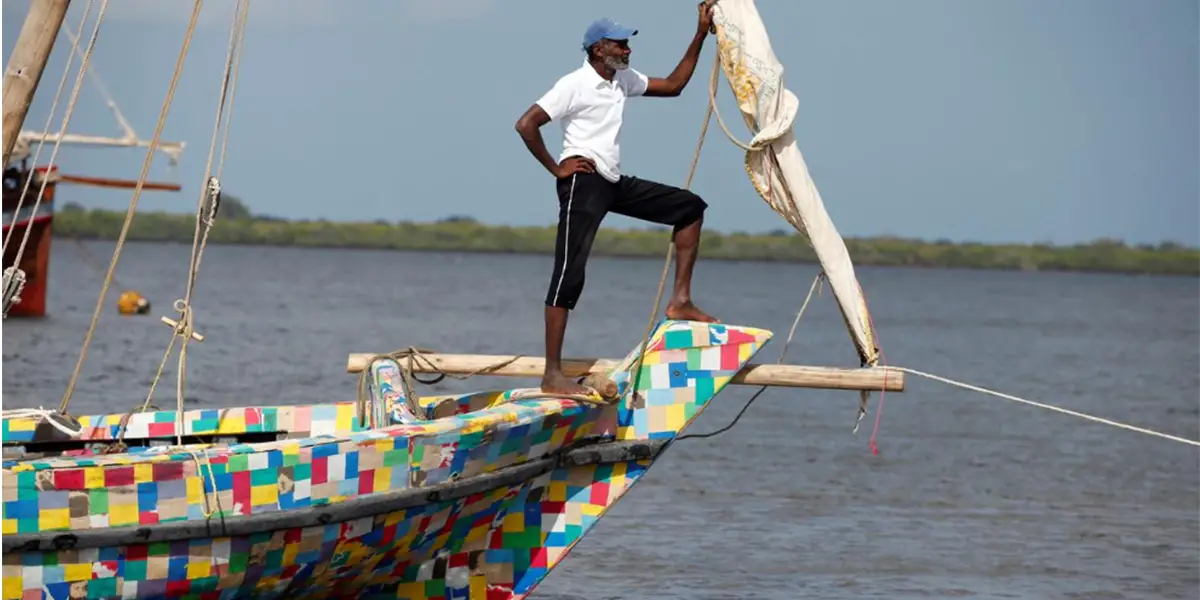Kenyan Islanders Builds Boat Out Of Flip Flops And 10 Tons Of Plastic
Tags: opinion

“Be the change that you wish to see in the world.”
― Mahatma Gandhi
The first desire is to scream; stop using so much cr*p in the first place. But then you realize that one battle in your war against plastic waste is already lost. One relic in our civilization that is guaranteed to last another 20000 years, and be recognizable even then, is the flip flop or a potato-chip bag.
It is then that we turn to recycling. We have drowned the land and oceans in mountains of plastic and we are at this pitiable stage where plastics outnumber fish. There is an attitude of indifference towards valuable natural resources as epitomized by the growing mountain of garbage and trash.
Also read: Eye-Opening Infographic Reveals the Extent of Plastic Pollution in the Ocean
A Creation Born Out Of Concern
Say hello to the Flipflopi. This isn’t just another boat plying off the coast of Kenya. It is a loving creation of a few Kenyans who floated the idea of spreading awareness on the need to recycle. Ben Morison, a tour conductor in the island of Lamu, an important center for dhow (a traditional boat) building in Kenya conducts boat expeditions off the Kenyan coastline. There he saw rejected flip flops and other plastic wastes floating en masse on the ocean. They were harming his tourism business and marine life.
Ahoy! Flipflopi
He resolved to make use of the plastic debris in the nearby ocean and also draw attention to this menace as reported by UN Environment. Helmed by Ali Skanda from Lamu, a traditional master-craftsman, and helped by a crew of skilled and enthusiastic local volunteers, he started on the project. It took 2 years to build the Flipflopi dhow, which is a masted, traditional sailing vessel that plies on the Indian Ocean.
It turned out to be a spectacular achievement by the team of boat builders. Locals turned up in droves to see the end-result of the beach cleanups they’d either seen or had been involved in. And it also drew international attention and admiration.
Islanders in Kenya build recycled plastic boat to highlight pollution | Reuters https://t.co/4T8Z6HWDVq pic.twitter.com/cPrUhWU2GI
— Evan Kirstel (@evankirstel) September 17, 2018
A Local Initiative That Turns Into An International Emblem
The main material used is the ubiquitous flip flops. Over 30,000 of them were collected from the beaches around Lamu along with other waste plastics. This light footwear transcends colour and creed and is used all over the world. The materials used to make the dhow are also locally sourced. Even the keel, ribs and structural elements are made using recycled including bags and bottles. The boat was constructed by local craftsmen using only local tools and traditional methods.
The Flipflopi Expedition
Morison felt that this was a good enough reason that this project could be replicated all over the world and turned into a mascot to highlight the pollution of the oceans.
It has already proved its sea-worthiness and initially sailed 500 km from Kenya to Zanzibar, aided by UN Environment. The expedition plans to sail around the Cape of Good Hope and will persuade individuals, companies, and countries to take concrete steps to stop the menace.
More than 13 million tons of plastic is dumped in the world’s oceans each year. Huge islands can be seen floating for kilometres around and they are killing marine life and even the corals by preventing sunlight from reaching them.
Morison wants to build larger versions of the Flipflopi and hopes that each boat will serve as an ambassador for a plastic-free world. He wants to act locally but intends the message to gradually reach a global audience. And he wants this initiative to be helmed by this colourful emblem of the global war against single-use plastic.
Leave Comment: